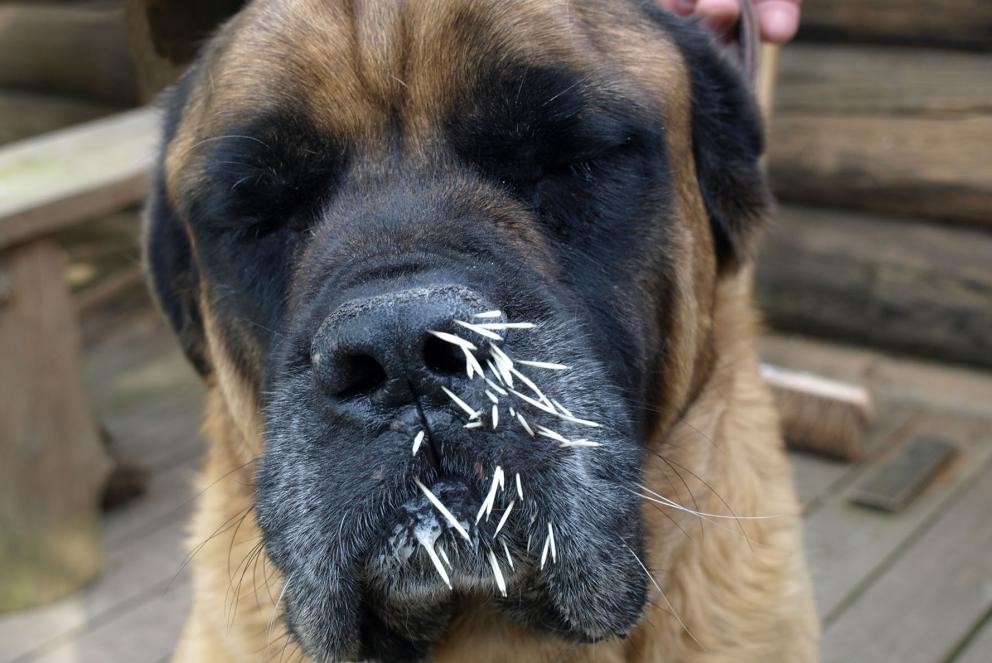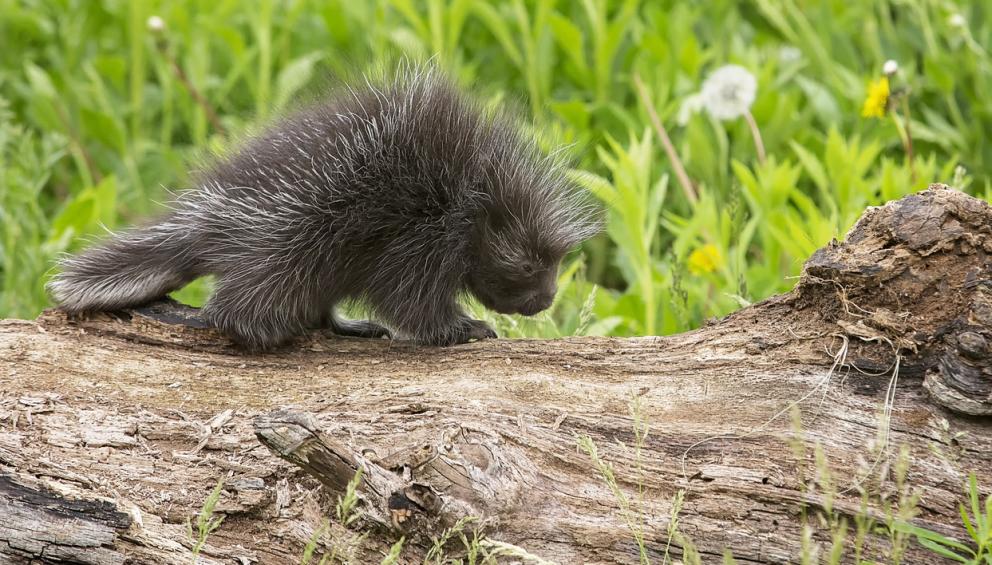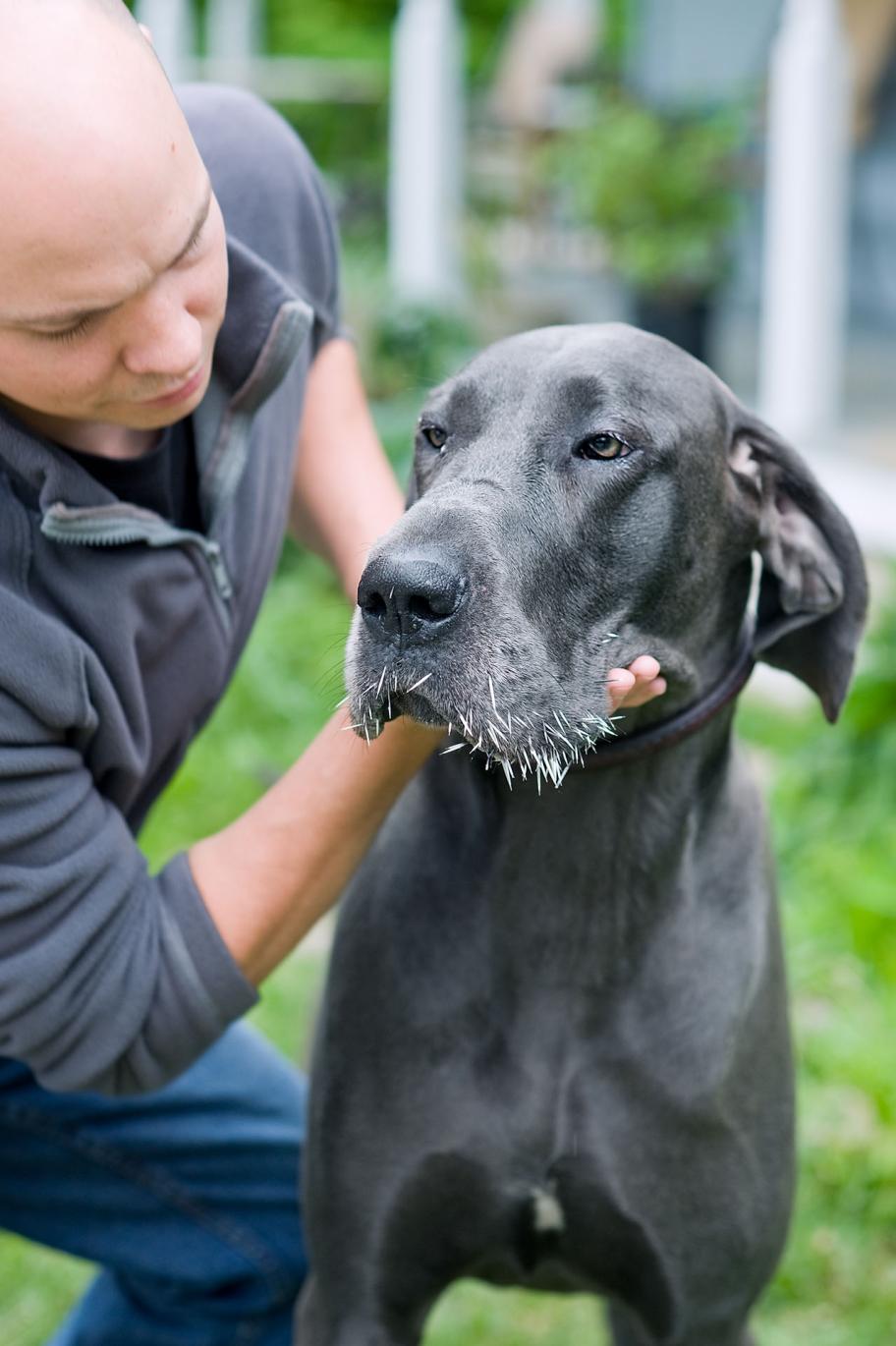You are here
Porcupine Quills in Dogs: What You Need to Know

Every year veterinarians see countless cases of dogs that have been quilled by porcupines. Other animals can also become a porcupine's victim if they stick their nose in the wrong place, but dogs are by far the most commonly quilled due to their aggressively inquisitive personalities. If you have a dog, it's important to be aware of the dangers posed by porcupine quills. How you handle a porcupine quilling event can have a significant impact on your furry friend's comfort and welfare.
Where Can I Expect to Encounter Porcupines
 North American porcupines are large rodents with coats of sharp spines or quills that protect them against predators. native to coniferous and mixed-forest habitats of Canada, northeastern and western regions of the United States, as well as northern Mexico. Although typically found in forests, they can also occupy grasslands, dessert shrub communities and even tundra. Porcupines are nocturnal animals and are typically active during the warmer months of the year. They forage for food (leaves, herbs, twigs, and clover) on the ground, but in the winter months, they may eat bark, and climb trees to find food.
North American porcupines are large rodents with coats of sharp spines or quills that protect them against predators. native to coniferous and mixed-forest habitats of Canada, northeastern and western regions of the United States, as well as northern Mexico. Although typically found in forests, they can also occupy grasslands, dessert shrub communities and even tundra. Porcupines are nocturnal animals and are typically active during the warmer months of the year. They forage for food (leaves, herbs, twigs, and clover) on the ground, but in the winter months, they may eat bark, and climb trees to find food.
Avoiding Porcupine Quills
Porcupines make a defensive display when it feels agitated or annoyed. The four main displays seen in an agitated porcupine are quill erection, teeth clattering, emitting of odour and attack. Contrary to popular belief, porcupines cannot "shoot" their quills. Porcupine quills are released on contact or can drop out when the porcupine shakes or shivers its body. New quills grow to replace ones lost. If the defensive display fails to deter a predator, they will often charge running sideways or backwards, swinging their tail. Keeping distance between your dog and a porcupine is the best way to avoid quilling. If your dog is not on a leash while enjoying wildlife, be sure to keep your eyes peeled, and your ears and nose open.
The Dangers Porcupine Quills Pose to your Dog
 These spiny quills can easily become embedded in a dog's skin, and can cause serious health problems if not removed quickly. Too many pet owners underestimate the seriousness of being quilled. In addition to the obvious discomfort they cause, embedded quills can also lead to blindness and lameness depending on their location, and once embedded they can migrate and cause fatal damage to organs.
These spiny quills can easily become embedded in a dog's skin, and can cause serious health problems if not removed quickly. Too many pet owners underestimate the seriousness of being quilled. In addition to the obvious discomfort they cause, embedded quills can also lead to blindness and lameness depending on their location, and once embedded they can migrate and cause fatal damage to organs.
What to Do if a Porcupine Quills Your Dog
Contact Your Veterinarian
If a porcupine quilles one of your animals, contact your veterinarian immediately and bring the animal in to have the quills removed. Once embedded, quills can migrate and lead to internal damage. Because of this danger and the usual need for anesthetic, under no circumstances should a pet owner attempt to remove the quills on their own.
Do Not Trim the Quills
Trimming the quills before seeing a veterinarian does not make them easier to remove or alleviate the animal’s pain—it can actually cause further complications.
Do Not Muzzle or Harness Over Quills
Though the animal might be in distress, do not attempt to put a muzzle or harness over any quills. Doing so risks embedding the barbed spines deeper and can lead to further complications.
Follow Recovery Instructions
Follow all of your veterinarian’s instructions regarding recovery including their prescribed use of antibiotics and painkillers.
